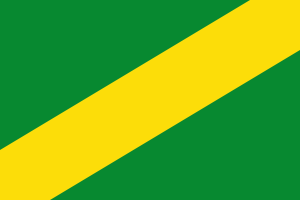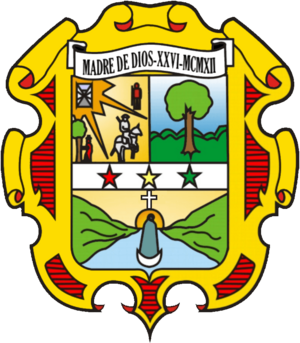Madre de Dios Region facts for kids
Madre de Dios is a special region in Peru, a country in South America. Its capital city is Puerto Maldonado. This region is located in the southeastern part of Peru and shares borders with two other countries: Brazil and Bolivia. The name "Madre de Dios" means "Mother of God" in Spanish, and it comes from the important Madre de Dios River that flows through the area. This region is famous for its amazing nature, including parts of the Amazon rainforest.
Contents
Where is Madre de Dios?
Madre de Dios is found in the Amazon basin, which is a huge area of rainforest. It is known for its flat lands and many rivers. The region is quite far from the Andes Mountains, which are very tall. This location makes it a hot and humid place, perfect for a wide variety of plants and animals. The main rivers here are the Madre de Dios River, the Manu River, and the Tambopata River. These rivers are like highways for people and wildlife.
Climate and Weather
The weather in Madre de Dios is tropical. This means it is warm all year round. There are two main seasons: a rainy season and a dry season. The rainy season usually lasts from October to April. During this time, there is a lot of rain, which helps the rainforest grow. The dry season is from May to September. Even in the dry season, you can still expect some rain. The average temperature is around 26 degrees Celsius (79 degrees Fahrenheit).
Amazing Nature and Wildlife
Madre de Dios is often called the "Biodiversity Capital of Peru." This means it has an incredible number of different living things. It is home to some of the most protected and untouched rainforests in the world.
Rainforests and Trees
The region is covered by dense rainforests. These forests have giant trees, some of which are hundreds of years old. You can find many types of trees, including mahogany and Brazil nut trees. The Brazil nut tree is very important for the local people because they collect and sell its nuts. The rainforest also helps produce a lot of the oxygen we breathe.
Animals of Madre de Dios
Madre de Dios is a paradise for animal lovers. It is home to many rare and exciting animals.
- Monkeys: You can see many kinds of monkeys swinging through the trees.
- Jaguars: These powerful big cats live deep in the forest.
- Tapirs: These are large, pig-like animals with short snouts.
- Giant Otters: These playful otters live in the rivers and are much bigger than regular otters.
- Macaws: Brightly colored macaws fly in flocks, making loud calls. They are a famous sight.
- Caimans: These are like small alligators and live in the rivers.
- Butterflies: Thousands of different butterfly species flutter through the air.
Many of these animals live in protected areas like the Manu National Park and the Tambopata National Reserve. These parks help keep the animals and their homes safe.
People and Culture
The people of Madre de Dios are a mix of different groups. Many people have moved here from other parts of Peru. There are also several indigenous (native) communities who have lived in the rainforest for a very long time.
Indigenous Communities
Some indigenous groups, like the Harakmbut, Machiguenga, and Ese'eja, live in the more remote parts of the region. They have their own unique cultures, languages, and traditions. They often rely on the forest for their food, medicine, and way of life. They are very knowledgeable about the rainforest and its secrets.
Life in Puerto Maldonado
Puerto Maldonado is the capital city and the largest town in Madre de Dios. It is a busy place and acts as a gateway to the rainforest. Many tourists come here to start their adventures into the national parks. The city has markets where you can find local products, including Brazil nuts, exotic fruits, and handicrafts. Life in the city is different from life in the remote forest, but both are important parts of the region's culture.
What is the Economy Like?
The economy of Madre de Dios is mostly based on its natural resources.
Brazil Nuts
Collecting and selling Brazil nuts is a very important activity. Many families earn their living from this. The nuts are gathered from wild trees in the forest. This is a sustainable way to use the forest, meaning it does not harm the environment too much.
Ecotourism
Tourism is growing fast in Madre de Dios. Many people from all over the world come to visit the national parks and reserves. They want to see the amazing wildlife and experience the rainforest. Ecotourism helps protect the environment because it gives local people a reason to keep the forest healthy. It also provides jobs for guides, lodge workers, and boat operators.
Other Activities
Besides Brazil nuts and tourism, some people also work in farming, fishing, and logging. However, there are efforts to make sure these activities are done in a way that does not damage the rainforest too much.
History of Madre de Dios
The history of Madre de Dios is linked to its rich natural resources. For a long time, indigenous people were the main inhabitants. In the late 1800s and early 1900s, people became interested in the region for its rubber trees. The "rubber boom" brought many new people to the area. Later, gold mining also became important. Today, the focus is shifting towards protecting the environment and developing sustainable ways for people to live and work in the region.
See also
 In Spanish: Departamento de Madre de Dios para niños
In Spanish: Departamento de Madre de Dios para niños



